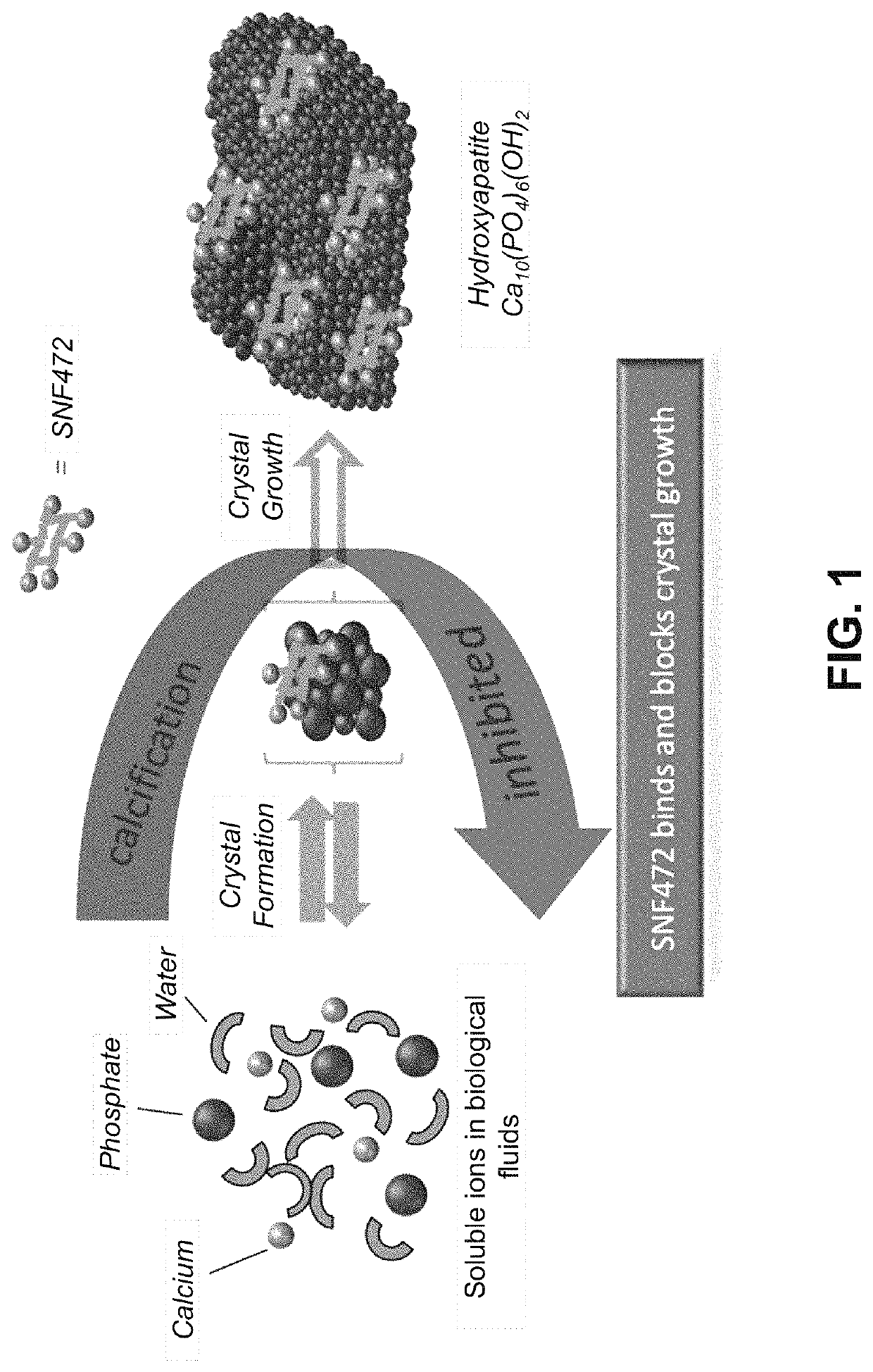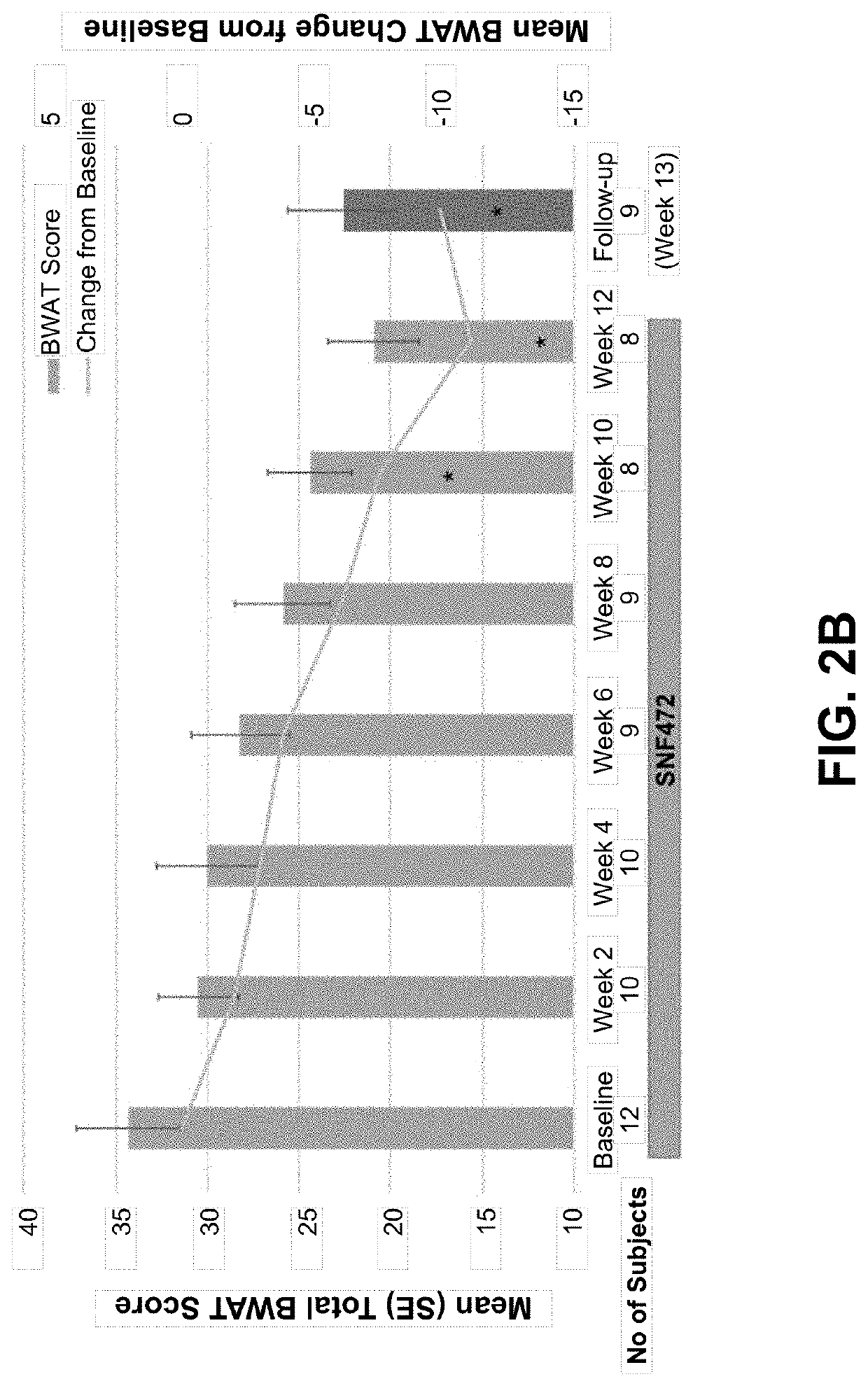IP and IP analogs dosage regimens for the treatment of ectopic calcifications
a technology of ectopic calcification and dosage regimen, which is applied in the direction of dermatological disorders, drug compositions, cardiovascular disorders, etc., can solve the problems of no existing curative treatment for which efficacy has been demonstrated with a sufficient level of proof, and no approved calciphylaxis therapy, etc., to prevent ectopic calcification and effectively treat or prevent ectopi
- Summary
- Abstract
- Description
- Claims
- Application Information
AI Technical Summary
Benefits of technology
Problems solved by technology
Method used
Image
Examples
example 1
A Phase 2 Open-Label Single-Arm Study to Assess the Effect of SNF472 on Wound Healing in Subjects with Calciphylaxis
Background
[0295]Calciphylaxis in end-stage renal disease is characterized by painful necrotic skin ulcers and high mortality. There are no approved therapies. SNF472, an intravenous formulation of myo-inositol hexaphosphate, selectively inhibits formation and growth of hydroxyapatite crystals, the final common pathway in vascular calcification. This phase 2 study evaluated SNF472 in the treatment of calciphylaxis.
Methods
[0296]In this open-label, single-arm study, subjects with calciphylaxis and on hemodialysis received intravenous SNF472 6-9 mg / kg during thrice weekly dialysis for 12 weeks, on top of standard care. The primary endpoint was Bates-Jensen Wound Assessment Tool (BWAT). Pain visual analog scale (VAS), wound quality of life (QoL), and qualitative wound image review were secondary endpoints. Quantitative changes from baseline to week 12 were analyzed for all ...
PUM
| Property | Measurement | Unit |
|---|---|---|
| concentration | aaaaa | aaaaa |
| concentration | aaaaa | aaaaa |
| pH | aaaaa | aaaaa |
Abstract
Description
Claims
Application Information
 Login to View More
Login to View More - R&D
- Intellectual Property
- Life Sciences
- Materials
- Tech Scout
- Unparalleled Data Quality
- Higher Quality Content
- 60% Fewer Hallucinations
Browse by: Latest US Patents, China's latest patents, Technical Efficacy Thesaurus, Application Domain, Technology Topic, Popular Technical Reports.
© 2025 PatSnap. All rights reserved.Legal|Privacy policy|Modern Slavery Act Transparency Statement|Sitemap|About US| Contact US: help@patsnap.com



